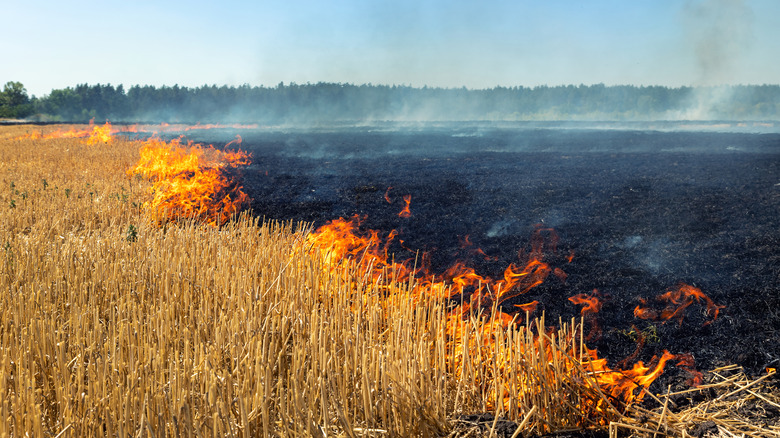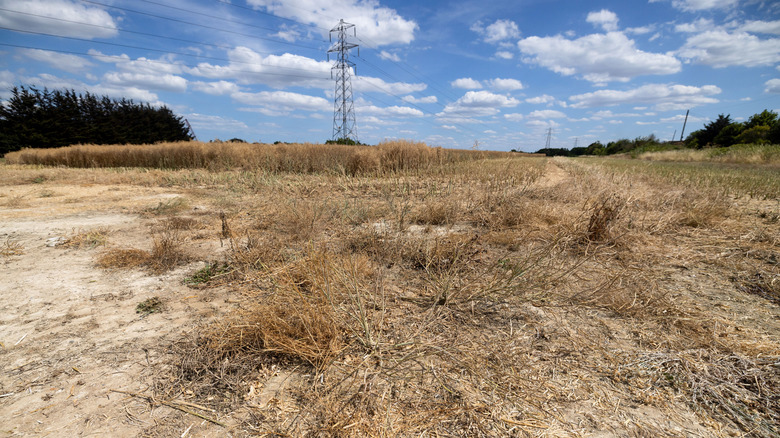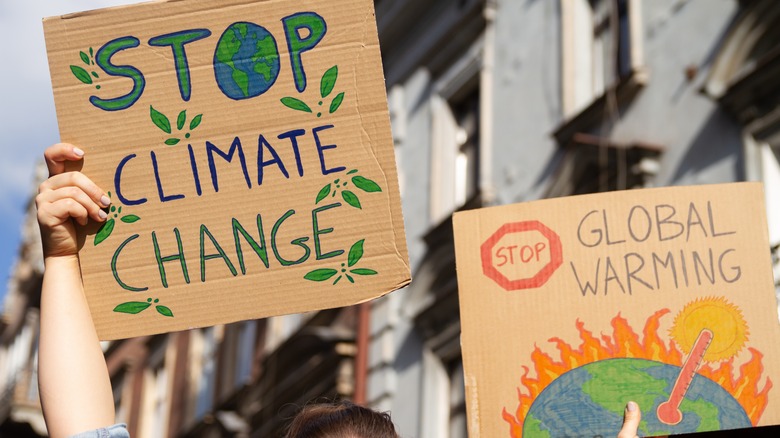The Costly Effect High Temperatures Are Having On Our Food System
Ready for something different? So are we. But, in the meantime, get ready for some more bad news: In addition to foreign and domestic political unrest, the war in Ukraine, soaring inflation, and an ever-present pandemic, the planet is literally on fire.
Heat waves are sweeping the globe, with record high temperatures being felt from Europe to Asia, according to Mother Jones. In Europe, the extreme heat and drought conditions are wreaking havoc on parts of the continent, according to CBS News. Italy's Tiber River, for example, is a whopping five feet lower than usual, and wildfires are raging from the U.K. to Greece. Compounding the issue is that as the fires continue to rage, water scarcity makes them harder than ever to put out.
The problem is especially dire in Portugal and Spain, where dozens of wildfires continue to burn and temperatures climb above 40 degrees Celsius (104 degrees Fahrenheit), according to the BBC. The extreme heat has been directly linked to over 280 deaths in the two countries.
Naturally, the extreme weather is affecting farmland. Earlier this year, for example, Italy's once-fertile Po River Valley (responsible for much of the global wine industry) dried up so dramatically that ancient shipwrecks became visible, reports the Associated Press. So what does all this mean for our food system? No surprise — the answer is not good. In addition to death and destruction, the extreme heat is causing global food shortages and increased food prices.
Heat is drying up crops around the world
Just how bad is it? Earlier this week, The European Commission officially lowered its estimated wheat yield by 5 million tons, according to Bloomberg. India has already banned wheat exports as domestic supplies dwindle, reports the BBC. And, as Reuters notes, in the worst invasion in 30 years, billions of locusts are currently swarming dried fodder and alfalfa crops on the Italian island of Sardinia.
According to CNN, the Central Meteorological Observatory warns that as at least 84 cities across China have raised their highest-level red alert warnings in response to extreme heat. These scorching temperatures could damage crops of wheat, corn, and soybeans. If these staple crops go, not only would their absence be catastrophic, but it would subsequently impact the pork industry (China's most common meat source), since these ingredients make up most of industrial pig feed.
The U.S. is certainly not immune to the devastating effects of extreme heat and drought. This is especially true in California's Central Valley, often referred to as the bread basket of the country, where crops from vegetables to almonds have all suffered.
Drastic action is necessary to combat extreme weather
U.S. consumers have already begun to feel the financial impact of the international food crisis. According to the Associated Press, in June, the U.S. Consumer Price Index increased 9.1% — the biggest jump since 1981. Now, as people around the world are being forced to literally flee their homes as wildfires threaten cities and towns, it's the perfect storm for an already-existing global food crisis made even worse by the Russian invasion of Ukraine. The two countries are among the largest exporters of grain in the world (via Forbes).
The only solution to these unprecedented conditions is equally unprecedented action. SafeHome warns that, unless humans around the world implement major changes to significantly combat the effects of climate change by 2030, species will begin dying off in droves, sea levels will rise dangerously high, and extreme climate events like the kind we're experiencing now will only become more extreme.


